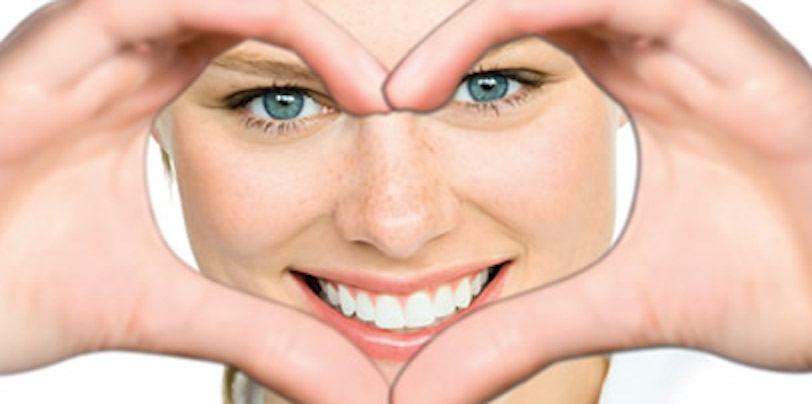by Roseman Dental | Feb 18, 2015 | Dental Clinic Blog, Oral Health, Roseman Dental - NV, Roseman Dental - UT
It is crucial for your children’s health that they develop good oral hygiene habits from a young age. To that end, the American Pediatric Association recommends that children have their first dental exams starting between 1 and 2 years of age. This is particularly important since the primary teeth start erupting as early as six months. These baby teeth will then go on to set the stage for the proper alignment and development of your child’s permanent teeth.
How to Motivate Your Young Child
Initially you will be taking care of your child’s teeth, but starting around age 2, your child can start helping in his or her own oral care. At about the age of 6, when the requisite motor skills have developed, your child will be able to take over brushing and flossing his or her own teeth. To keep your child motivated, try some of these tips:
- Get your child an electric or manual toothbrush with a favorite character on it
- Model good brushing and flossing behavior for your child and let him or her mimic you
- Use a footstool so your child can watch himself in the mirror
- Choose a flavored toothpaste with a design on the tube that appeals to your child
- Try singing to your child or play a song while your child is brushing so they do it for the full recommended two minutes
- Let your child practice brushing the teeth of stuffed toys for practice
- Keep the sessions short, particularly for really young children
- Assist with brushing up to age 6 or 7 to ensure removal of plaque and other harmful bacteria
Make Trips to the Dentist Fun
By starting dental visits at a young age, your child will be more likely to think of it as a fun activity rather than something to be feared. Try some of these tips to allay your child’s fears:
- Stay calm, yourself. You don’t want your child to sense you are nervous.
- Tie the trip into some other fun thing for your child to do afterward.
- Take one of your child’s favorite books along to read in the waiting room.
- Take along a coloring book and crayons or one of your child’s favorite toys.
- Find a pediatric dentist that specializes in working with young children and can make them feel comfortable during the visit.
By making oral routines fun for your child and easing anxieties about visits to the dentist, you can make oral health something that your child looks forward to with positive anticipation.

by Roseman Dental | Feb 14, 2015 | Dental Clinic Blog
Most people don’t realize just how important oral health is to their overall health. What happens in your mouth can impact your entire body in both good and bad ways. If you are dealing with inflammation and infection in your mouth it often leads to poor health in other areas of your body, and oral health has even been linked to chronic illness such as heart disease and diabetes. If you want to improve your health this year, show your mouth some love with these four tips.
Eat More Fruits and Veggies
 If this sounds like a weight loss resolution, consider that eating more fruits and vegetables (and a healthier diet all around), can help you lose weight at the same time that it improves your oral health. Nutrients in fruits and vegetables help to build your immune system, improving your ability to fight off infection like gum disease, inflammation, and bacteria in your mouth. Raw, crispy fruits also help reduce plaque buildup on the teeth, leading to fresher breath and fewer cavities.
If this sounds like a weight loss resolution, consider that eating more fruits and vegetables (and a healthier diet all around), can help you lose weight at the same time that it improves your oral health. Nutrients in fruits and vegetables help to build your immune system, improving your ability to fight off infection like gum disease, inflammation, and bacteria in your mouth. Raw, crispy fruits also help reduce plaque buildup on the teeth, leading to fresher breath and fewer cavities.
Quit Smoking
Smoking is one of the main causes of oral decay, including tooth discoloration, cavities, receding gums, infection, and lung and oral cancers. Both cigarettes and smokeless tobacco can double your risk of losing your teeth, but fortunately once you stop smoking, the risk of tooth loss and other diseases immediately decrease.
Start Flossing
If you think your mouth is healthy because you already brush twice a day, it could be a lot healthier if you add flossing to that routine. Flossing helps remove hard-to-reach plaque that builds up between teeth and near the gum line, where you toothbrush can’t reach, and where gum disease often begins. It only takes 2 minutes to floss your teeth, so if you add that to your 2 minutes of brushing in the morning or night, you’re still only spending about 5 minutes a day to get a healthier mouth.
Go See a Dentist
Even with the best at-home oral health care, there is no substitute for seeing your dentist regularly for cleanings and check-ups. If you haven’t been to the dentist in a while, show your mouth some love by schedule an appointment. Your dentist can help you identify and prevent oral health problems before they become major issues, and may notice subtle signs of disease that you would otherwise not see on your own. There are affordable places you can go for dental care, including the Dental Clinic at Roseman University, if you don’t have a dentist or you can’t afford to go to the dentist because you don’t have insurance.
by Roseman Dental | Feb 11, 2015 | Dental Clinic Blog, Oral Health, Roseman Dental - NV, Roseman Dental - UT
February is the American Dental Association’s National Children’s Dental Health Month (NCDHM), and this year’s theme is Defeat Monster Mouth. In order for the program to be successful and make a positive impact on kids’ knowledge about dental health, outreach and education are crucial. If you work with children (for example, teachers, dentists, nurses, or other professionals) and are interested in contributing to this project, consider downloading the free NCDHM planning program guide. This document includes a wealth of important knowledge, including tips on how to schedule a proclamation signing, various ideas for kids’ activities and a planning timetable.
Proclamations
Having your town’s mayor sign a proclamation can send a message to the community at large that children’s dental health is an important priority for your town. Publicizing the event can be a great way to increase awareness, both among children and their parents, about the importance of brushing, flossing and eating healthy. A sample proclamation can be found in the planning program guide, along with helpful tips for how to schedule the signing.
Activity Ideas
Many children learn best through games and activities. That is why the planning program includes many great activity ideas, including:
- Coloring contests: Organizing contests and games that get the word out about NCDHM can be an effective way to educate children.
- Health fairs: You can get in contact with different health fairs in your area and design a booth that promotes Defeat Monster Mouth and distributes information about healthy dental habits. Also find out about local Give Kids a Smile events that provide free dental care to children.
- News coverage: The media, both print and television, are another great avenue through which to reach out to the community about the program.
Planning Timetable
Also included in the guide is a planning timetable. This schedule can be quite useful, particularly if this is your first time helping to organize NCDHM events. From October to March, there is work to be done to ensure that National Children’s Dental Health Month goes smoothly. Take a look at the timetable for ideas on how you can get started.
Bringing awareness to the public at large about how children can take care of their teeth can have a large and positive impact. On the whole, the Defeat Monster Mouth planning program guide is an excellent resource for dentists, teachers and parents who wish to get involved in the program. It includes helpful information regarding how to schedule proclamations signings, a planning timetable, and potential activities for kids and adults alike.
by Roseman Dental | Feb 4, 2015 | Dental Clinic Blog, Oral Health, Roseman Dental - NV, Roseman Dental - UT
You have probably heard that mouthwash is a valuable addition to any dental hygiene routine, but you may not understand why. Simply swishing a tingly liquid around in your mouth may not seem like a big deal, but new research published in 2013 shows that patients who use an effective mouth rinse along with their tooth-brushing routine are able to reduce their gingivitis and plaque significantly. Here is a simple explanation of how mouthwash works.
Toothbrushes Are Limited
Although toothbrushes are extremely helpful for removing plaque and bacteria from the visible surfaces of the teeth, they can only reach about 60 percent of the tooth surface, leaving 40 percent (around the cracks and between teeth) where bacteria love to grow and flourish. Mouthwash, on the other hand, is able to reach almost 100 percent of the various surfaces in the mouth, which makes it invaluable for cleaning hard-to-reach areas.
Antiseptic Properties
Some types of mouthwash are formulated to have anti-plaque and antiseptic properties. This means that individuals who rinse with antiseptic mouthwashes may be able to kill a significant portion of the bacterial plaque found within the mouth. When used in conjunction with regular brushing and flossing, mouthwash can offer the following benefits:
- Reduced tooth decay
- Decreased instances of bad breath
- Reduced chance of developing gingivitis
How Mouthwash is Used
Mouthwash is most effective when it is forcefully swished around the mouth. This action helps the mouthwash to reach the gaps between the teeth and remove food particles and bacteria from those areas. Individuals who have bad breath are also encouraged to gargle with mouthwash because the bacteria that cause bad breath often reside in the back of the tongue and throat.
It is important not to swallow mouthwash, since it may contain alcohol and other ingredients that are not safe for ingestion. In order to discourage swallowing, it is recommended that you only put a pre-measured amount of mouthwash in your mouth at a given time.
Improve Your Dental Health
If you want to add to your current dental regimen and improve your dental health even more, purchase high-quality mouthwash and use it on a regular basis.


